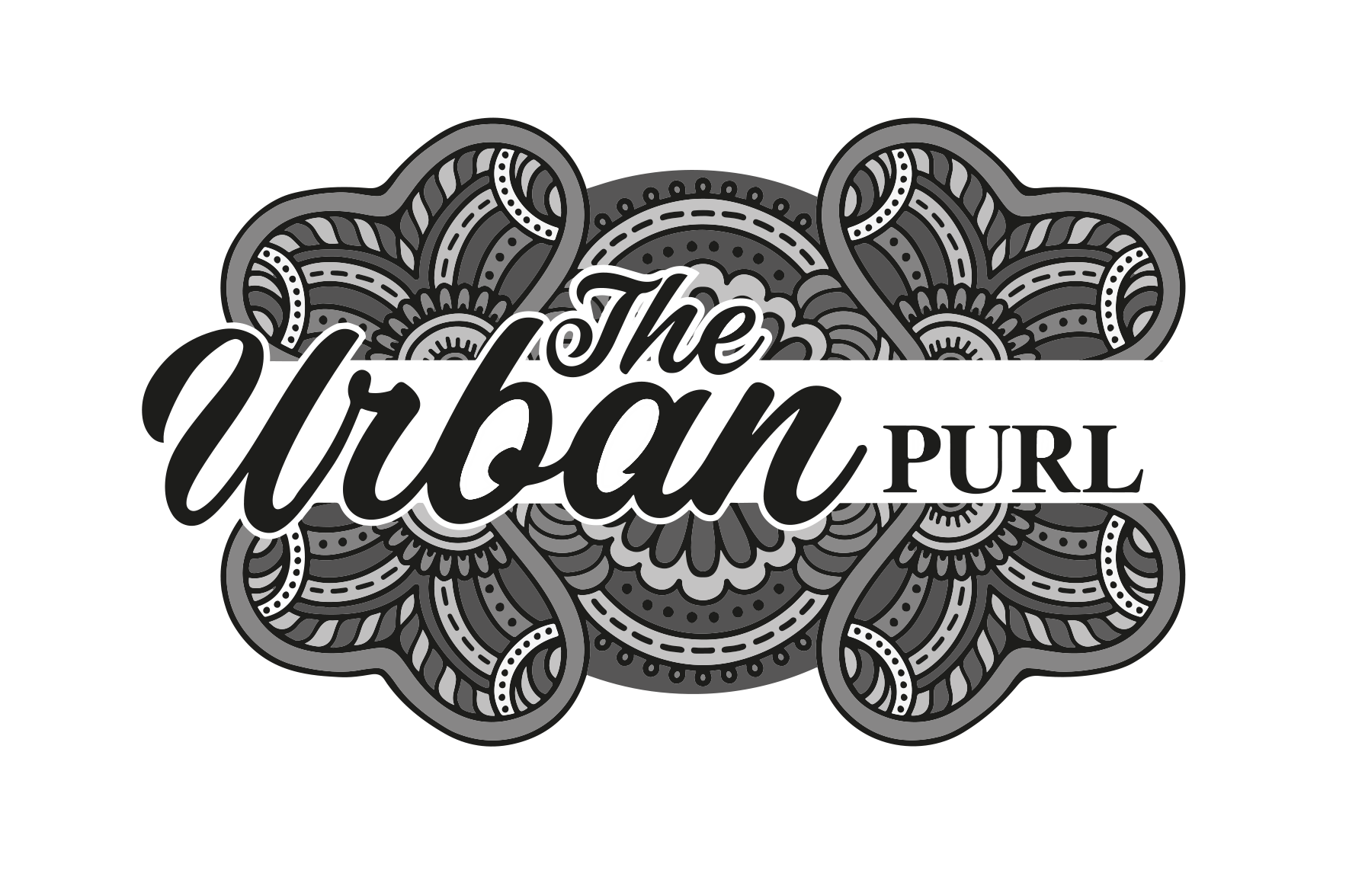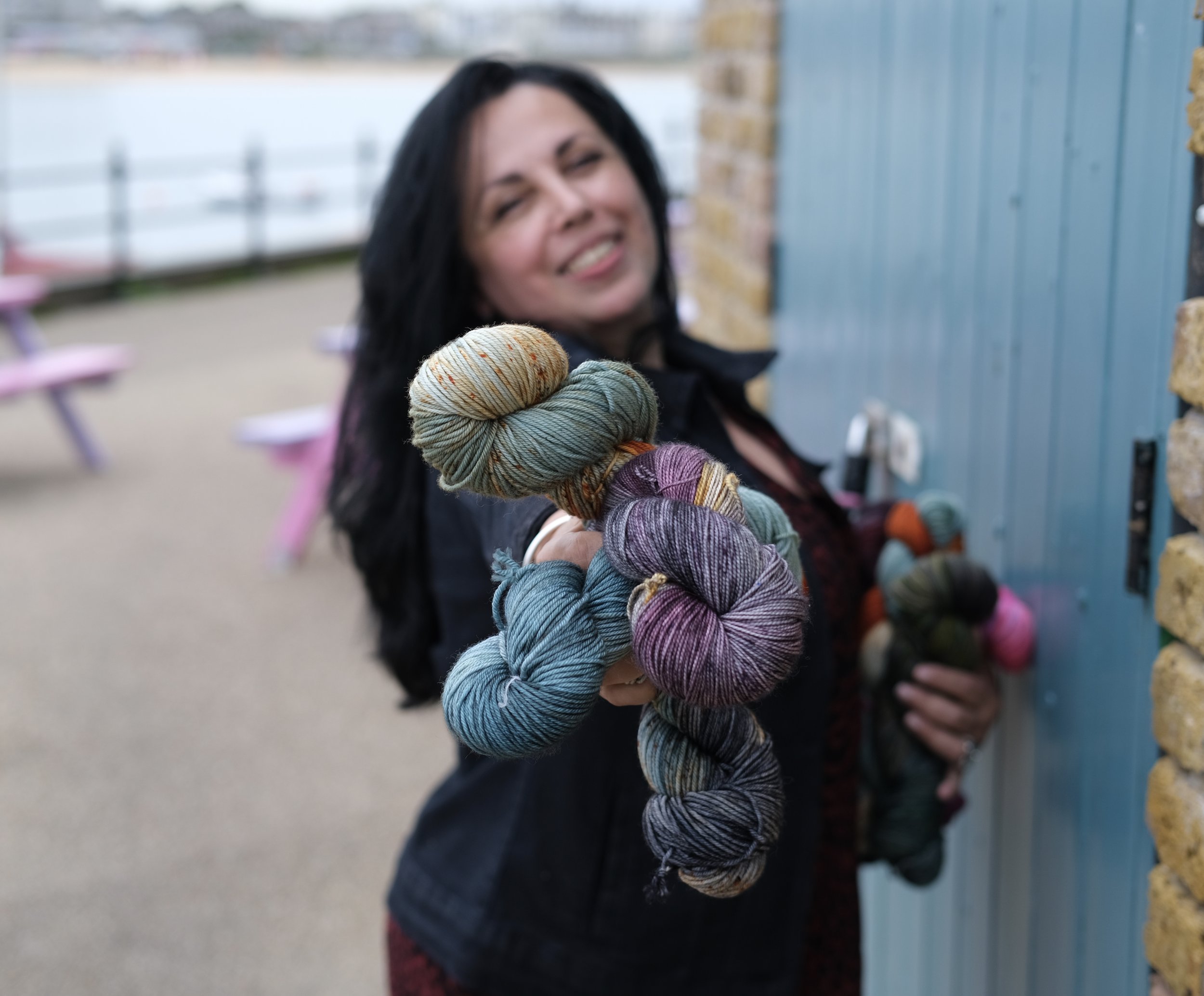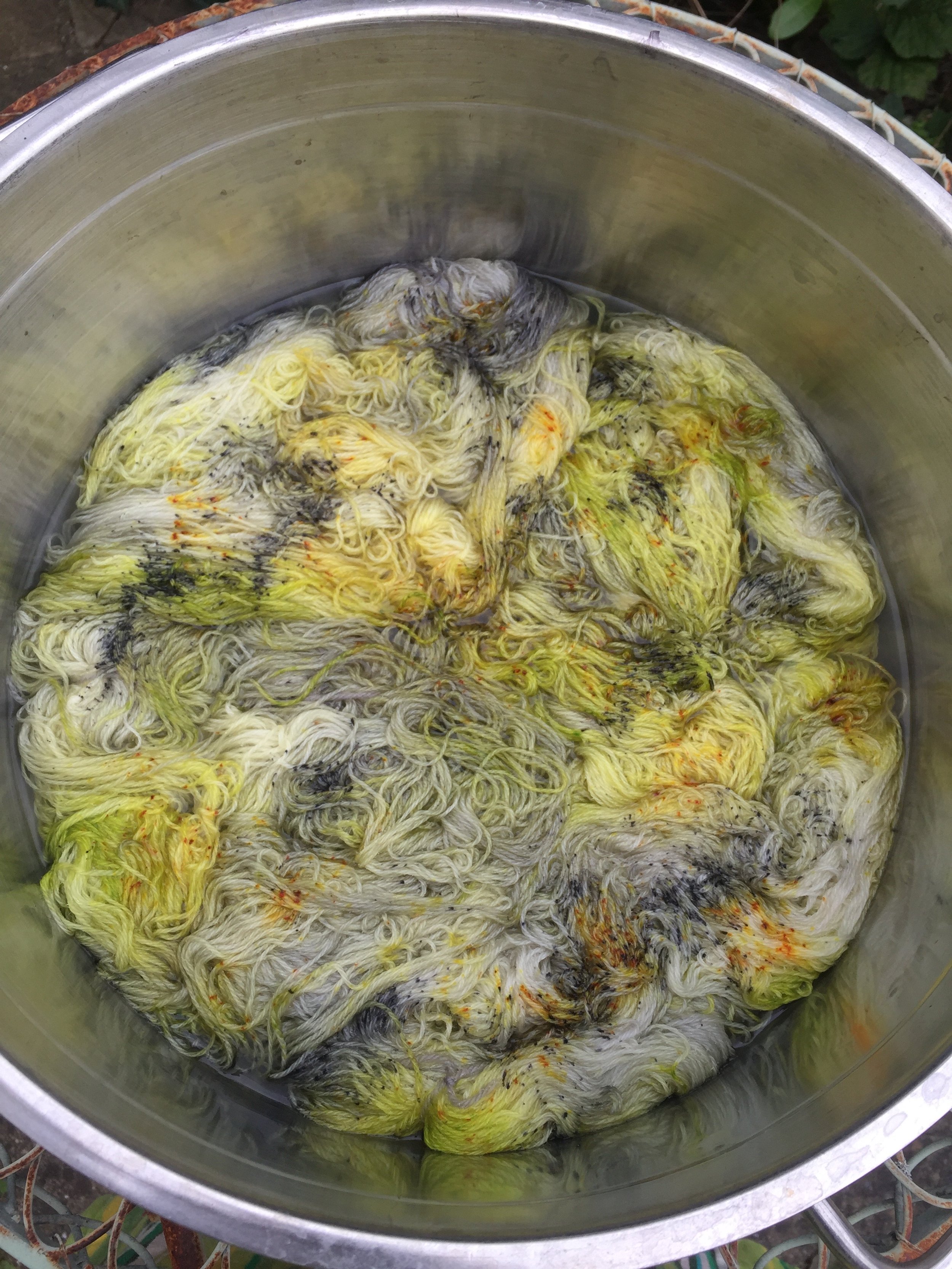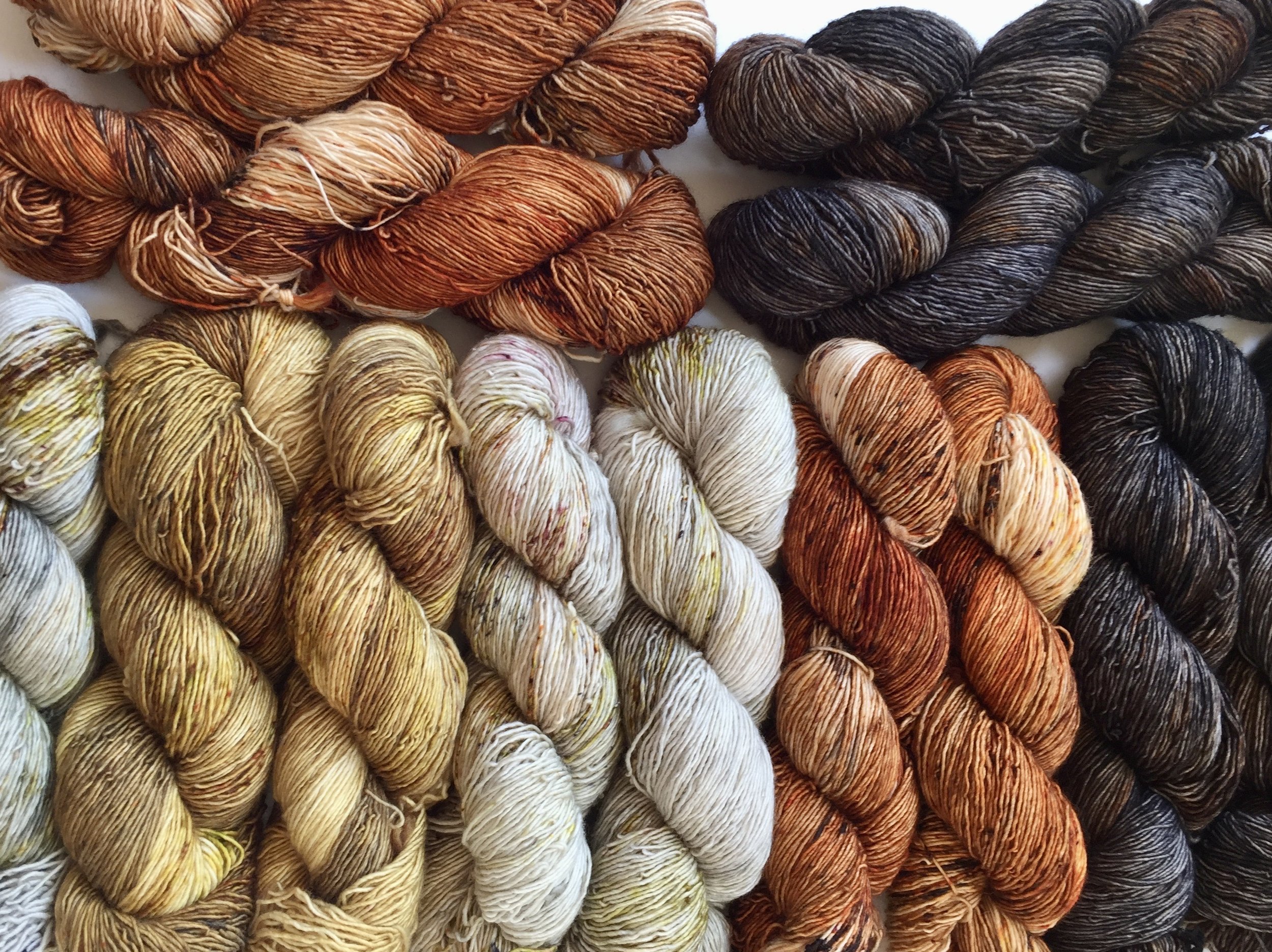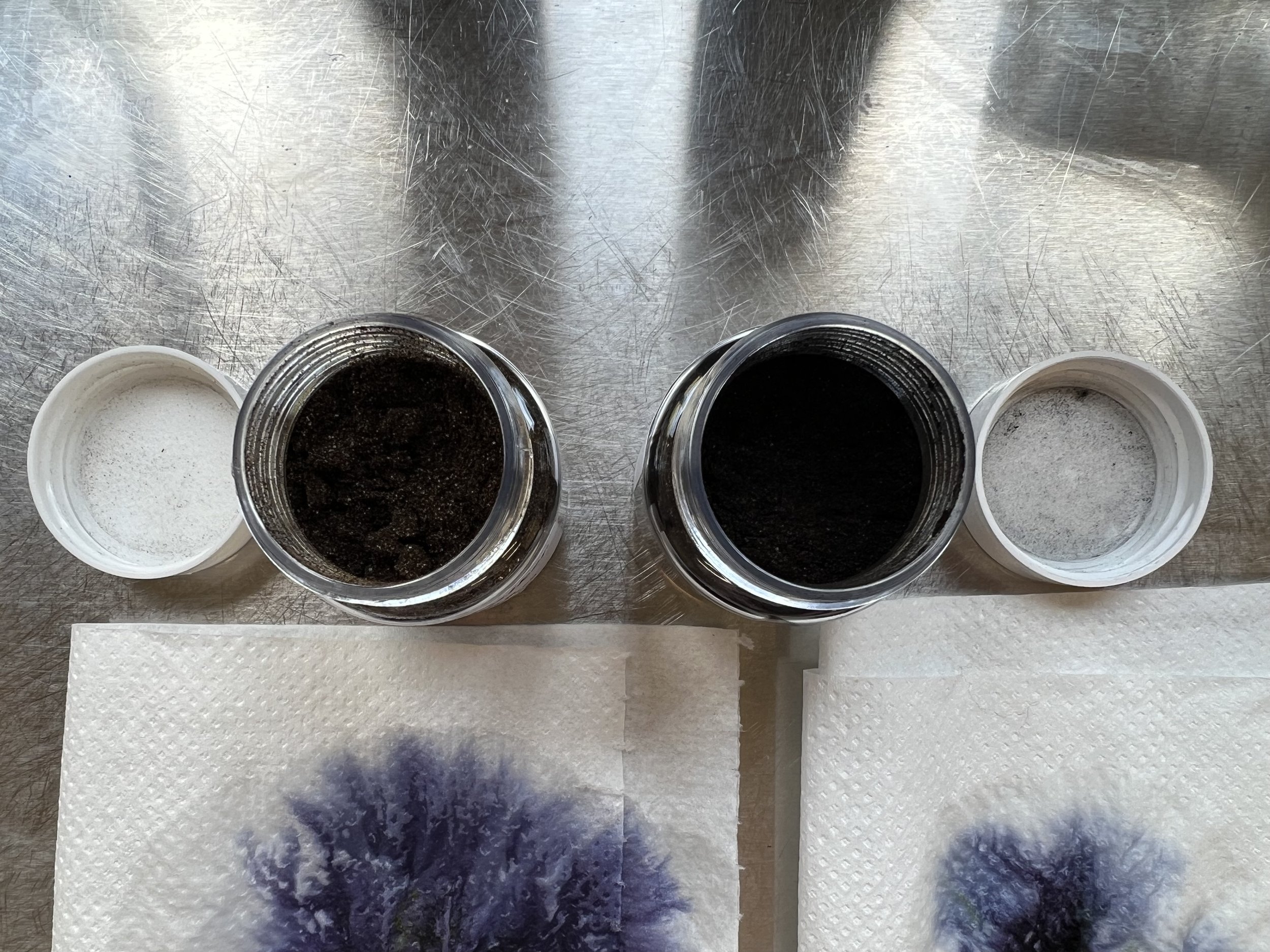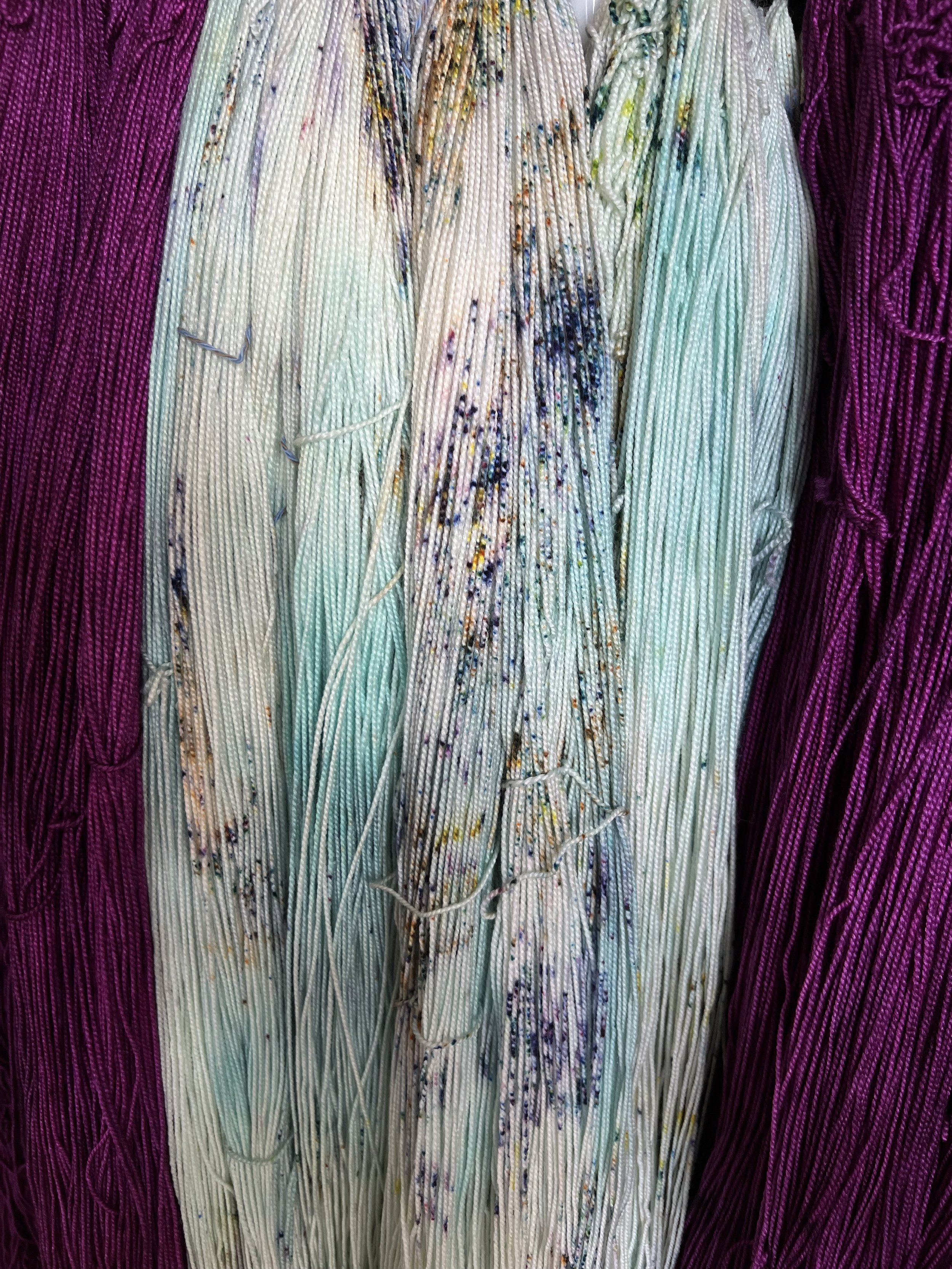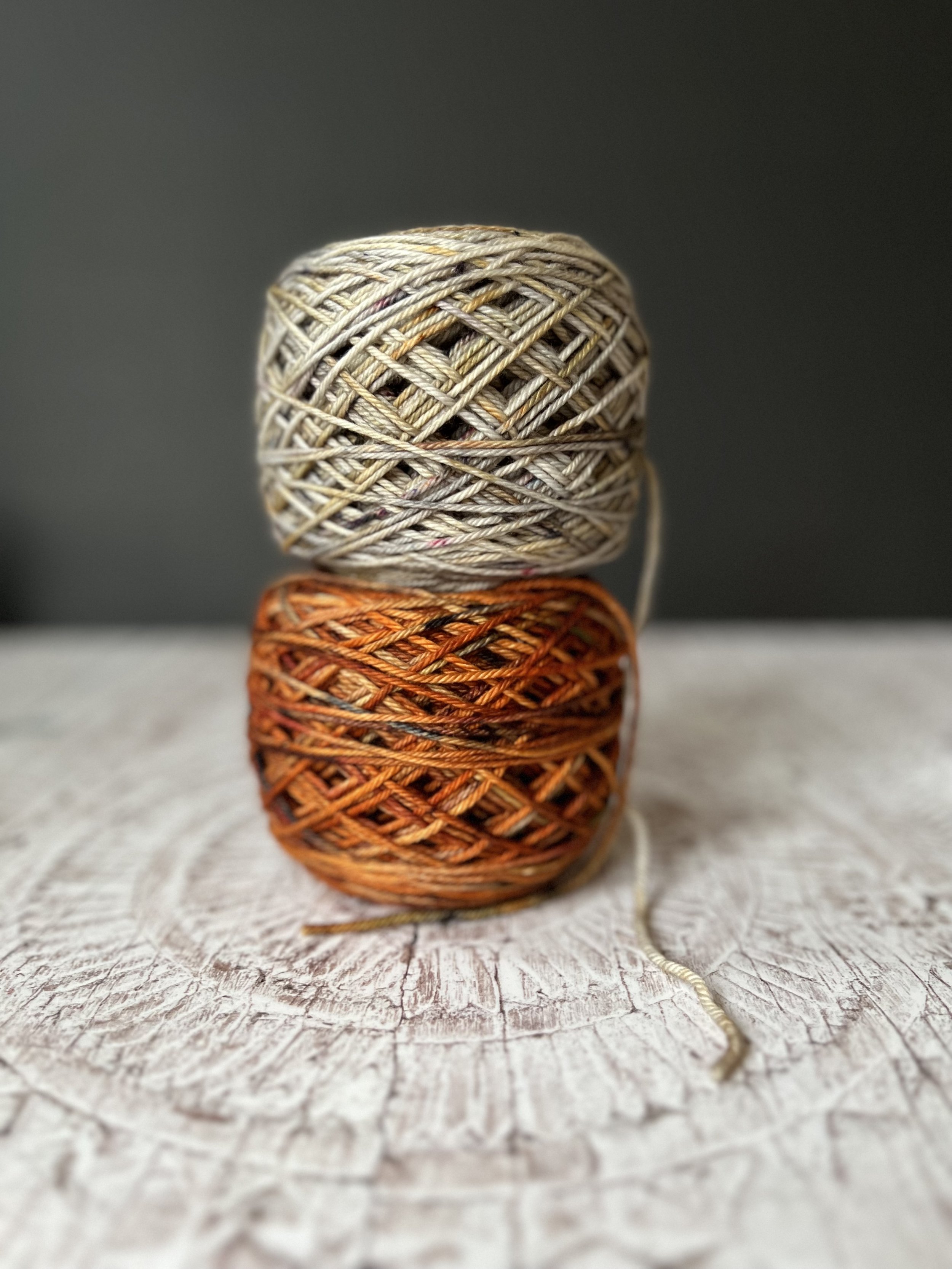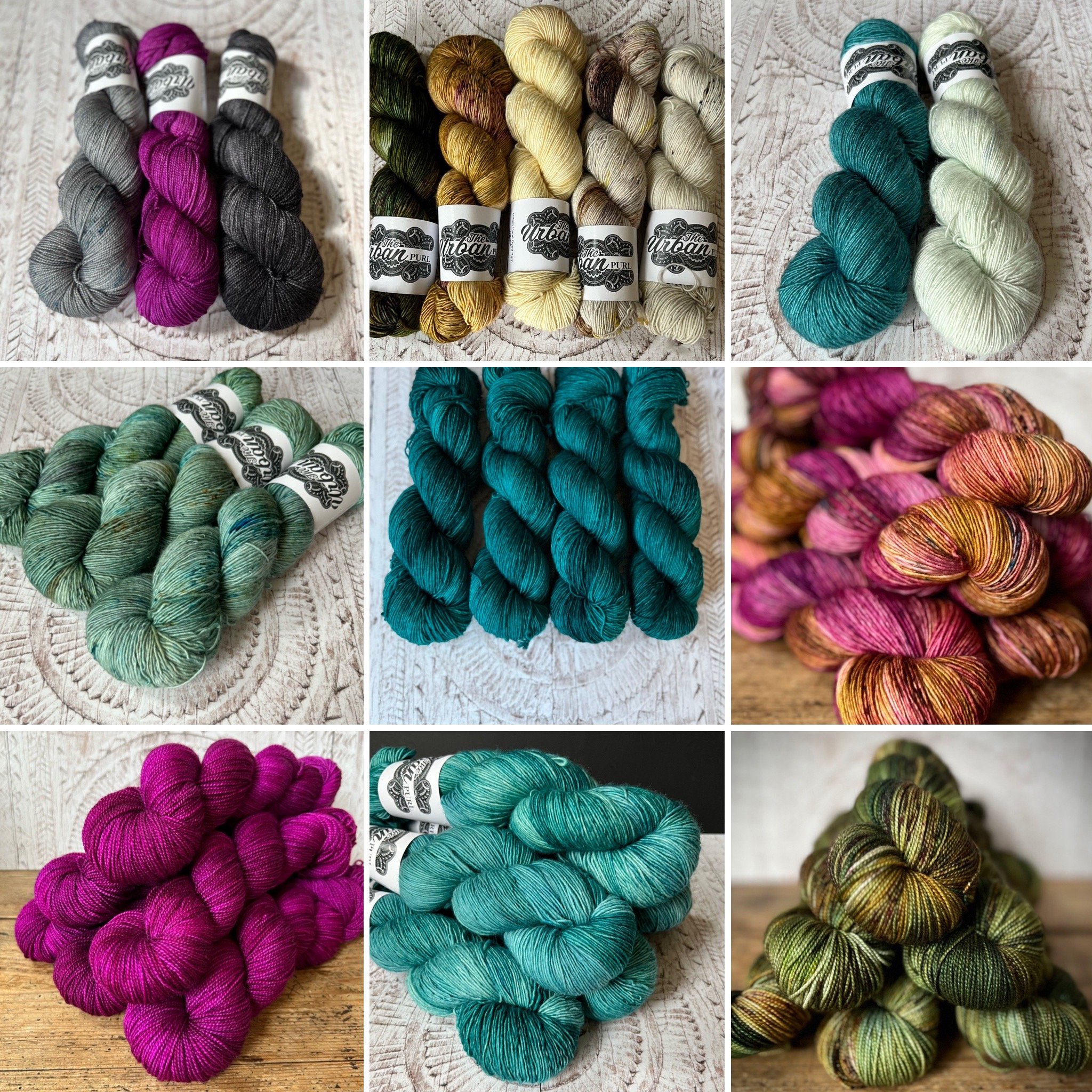About me - Leila
I dye colours galore from my tiny Studio in North West London. My inspiration is driven by a fascination with urban/cityscapes, ancient mythology, cosmology and curiosities with references taken from my culturally rich and diverse background.
A maximalist at heart, I create intricately blended & layered moody hues. I love compelling, rich, vibrant shades with or without speckles. The texture, dimension and handle of a yarn are key factors when choosing the right yarns for my collections, and I constantly strive to keep my yarn choices luxurious yet sustainable, ecologically friendly and as cruelty free as possible.
About Hand Dyed Yarn
- Immersion or kettle dyeing
Hand Dyed Yarns are unique - they reflect each dyers’ processes and artisanal techniques that create an artistic interpretation or colour way - every dyer develops their own methods specific to them, giving their work a signature, it is truly an artistic endeavour.
- environmental factors play a part; the natural acidity of the local water ie in London where I’m located the water is ‘hard’, meaning it contains high levels of minerals such as calcium and magnesium carbonates giving our local water a higher alkaline PH value, this will have an impact on how the dye bonds to the fibre and more acid (vinegar or citric) is needed.
- products used - there are various types of dyes and pigments, natural or manufactured dyes. You need to also consider the type of fibre to be dyed; is it protein or plant based - eg Wool, silk, yak, alpaca are all protein fibres and linen, cotton, bamboo are plant fibres and need a different type of dye molecule that will bond with either the protein or plant fibre.
- water temperature during the dyeing process; fixers and mordants used ie - vinegar, citric acid to create an acidic medium to fix the dye to the fibre. Salts are know as levellers that achieve more even dyeing. Natural dyes use many chemical fixers & mordants also as natural pigments are less strongly adhering, less light and wash fast than say a commercially produced pigment.
This type of yarn is commonly “put-up” in skeins, or hanks to make it easier for the dyer to apply dye comprehensively. This way, you can see more of the yarn and the colour distribution and hopefully get a better idea of what it might look like when knitted. Most if not all hand dyed yarn is dyed and supplied in small dye lots or batches, I personally dye my skeins in batches of 6, 12 or 18 etc.
There are many other dyeing methods, low immersion, steaming, micro-waving etc.
How to knit with hand dyed yarns
Hand dyed yarns are often dyed up in different ways to give a variety of effects ;
Tonals - semi-tonal
Soilds
Speckled
Variegated
Once you have chosen the style, you may want to look at whether the wool is Superwash or Non Superwash. This is important as it will dictate how you knit, care and wash your garment. Whether the wool has undergone Superwash treatment is an indicator of it’s potential environmental impact. However, South America where we source our merino wool, adhere to strict controls regarding chemical effluents in grey water. The water discharged is as clean as tap water, but please be aware many other parts of the world are unregulated. Theoretically the UK should also have strict controls similar to those in South America but sadly, I have no confidence in our Water & Sewerage services at the moment.
Superwash yarns are chemically treated to resist felting and to increase their suitability to regular machine washing.
Wool felts naturally due to its structure when exposed to rapid changes of temperature when wet and exacerbated by agitation, causing the tiny scales covering the fibres to interlock, and matting them together. The Superwash treatment prevents this from happening.
The process is simple and doesn’t involve plastic: a chlorine treatment dulls the edges of the scales this reduces the ability of the scales to stick together. A micro-fine coating of resin is then applied which bonds to the wool, smoothing the scales onto the shaft of the fibre, thus preventing the scales opening out and leaves the yarn feeling smoother. The resin is biodegradable and breaks down with the wool when its useful life is over.
Prepping your yarn
Once you have purchased your hand dyed yarn, the first thing you will notice is that they are usually sold in skeins, as mentioned above, this allows for more even distribution of dye, and allows you to see how its been applied (if it’s speckled, tonal or variegated). Before you can start knitting it is essential you wind the skein into a ball or ‘cake’. If you don’t do this you will most definitely get into a tangled mess.
Equipment needed for winding - Old Skool method - a chair - place the skein over the back of the chair, cut the ties on the skein and start to unwind using your the thumb winding method to wrap your yarn into a a nice tidy ball. OR - buy a ball winder, and a swift, much easier and quicker and well worth the outlay if you intend to keep knitting.
Make a swatch
